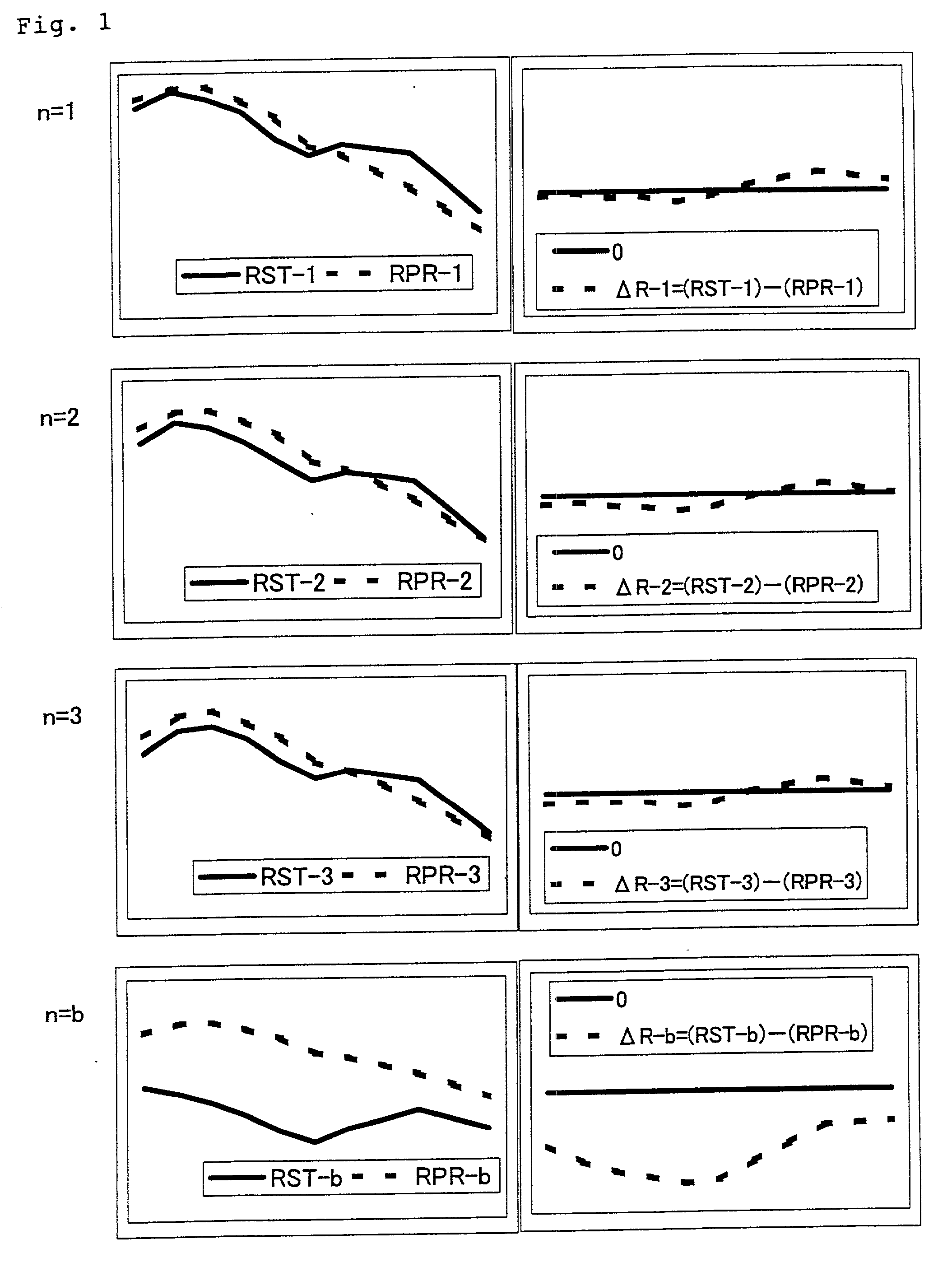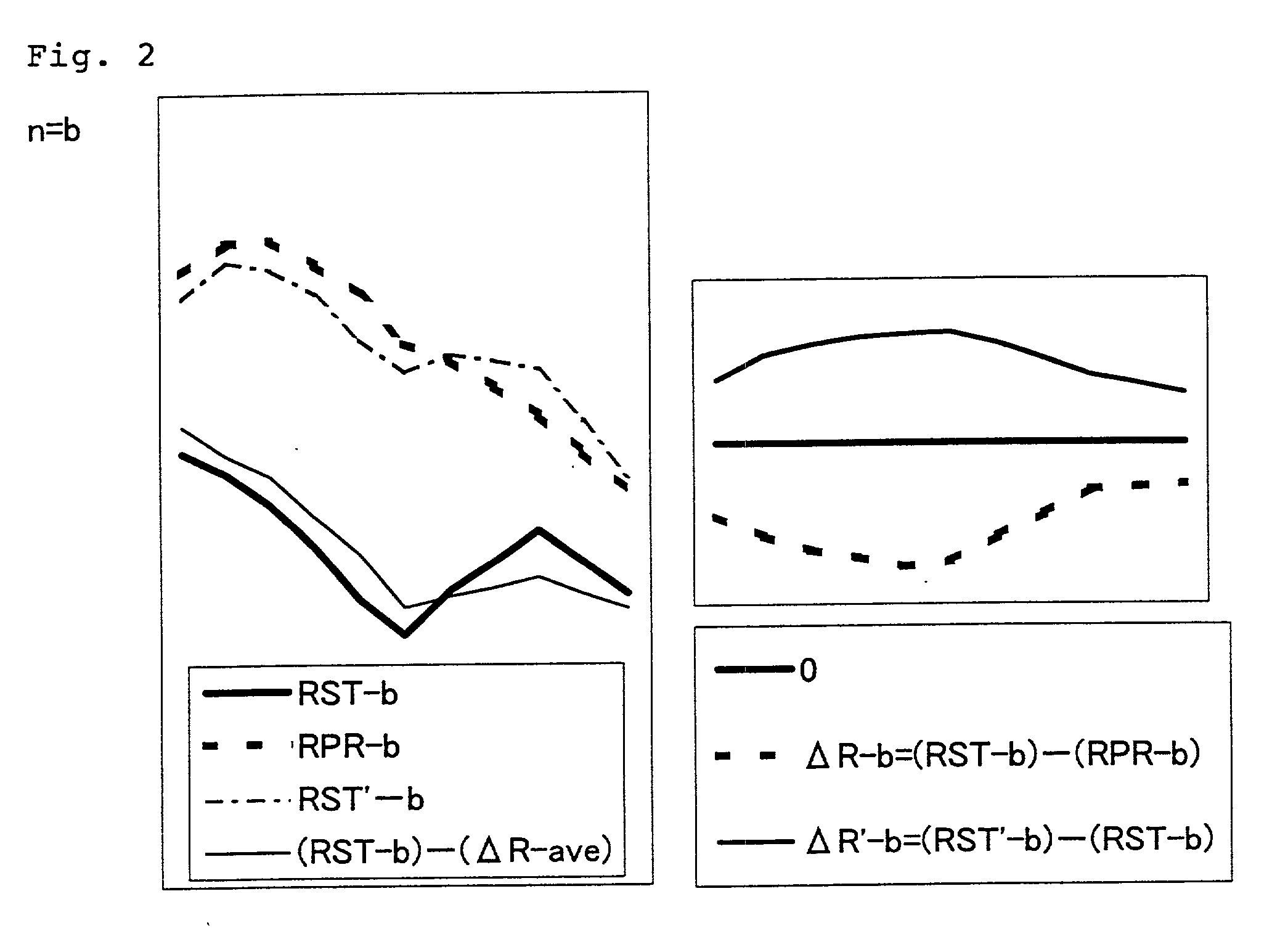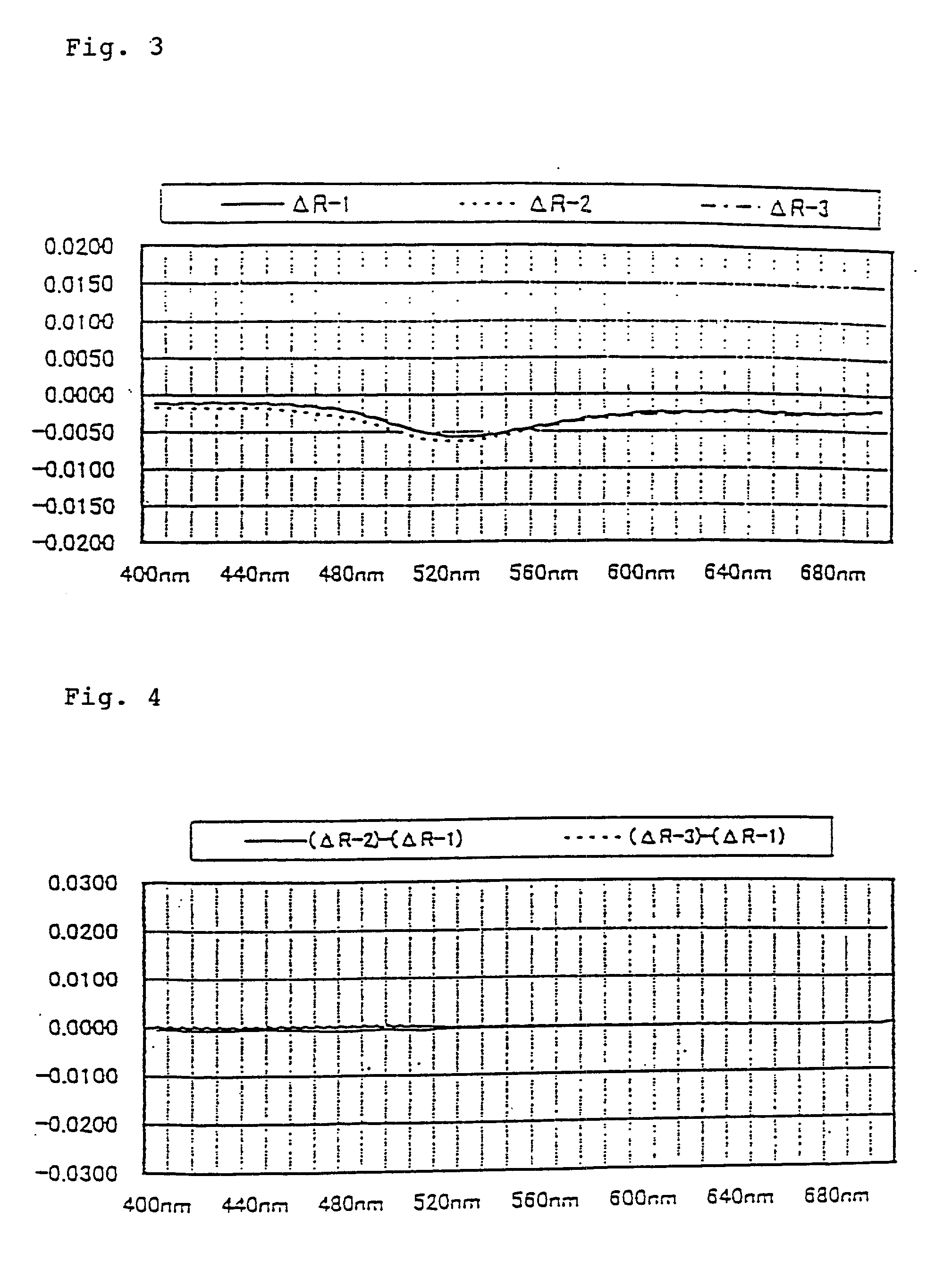Method for evaluating reproducibility of toning sample by ccm
- Summary
- Abstract
- Description
- Claims
- Application Information
AI Technical Summary
Benefits of technology
Problems solved by technology
Method used
Image
Examples
examples
[0065] The following Examples further illustrate the present invention in more detail. For CCM simulation, the 2 constants method of Kubelka-Munk theory was used.
examples 1
[0066] (Case I; Case Where a Dispersion-Processed Coloring Agent Is Used)
[0067] 3toning samples were produced for the target color. Samples were produced by kneading a vinyl chloride resin composition (PVC resin compound) and dispersion-processed DA type coloring agent for PVC (manufactured by Dainichi-seika color & chemical MFG., Co., LTD.) at a kneading rate shown in Table 1 (unit is "gram"). Kneading was performed at a temperature of about 170.degree. C. for 2 minutes using two heating rollers. After kneading, the predetermined molding processing was performed to obtain 3 kinds of samples.
1 TABLE 1 PVC 1st Time 2nd Time 3rd Time resin (n = 1) (n = 2) (n = 3) compound 100 100 100 Coloring agent DA P4050 (White) 0.8 0.75 0.75 DA P4710 (Black) 0.04 0.045 0.045 DA P4420 (Yellow) 0.10 0.10 0.11 DA P4620 (Blue) 0.06 0.06 0.055
[0068] The difference .DELTA.R-n between actually measured reflectance RST-n and simulated reflectance RPR-n for a toning sample according to the above formulatio...
case ii
[0069] (Case II; Case Where Non Dispersion-Processed Coloring Agent Is Used)
[0070] According to the same manner as that of the above Case I except that a non-dispersion-processed pigment was used in place of a dispersion-processed DA type coloring agent for PVC, samples were obtained and spectral reflectances were obtained similarly. The content is the content used in Table 1 multiplied by a pigment rate of DA color. In addition, database for CCM simulation is database for DA color divided by a pigment rate for each color. The differences .DELTA.R-n between actually measured reflectance RST-n and CCM simulated reflectance RPR-n for a toning sample for the formulation is shown in Table 3. In addition, the difference curves of spectral reflectance regarding to .DELTA.R-n in Table 3 is shown in FIG. 5, and the difference curves of spectral reflectance regarding to (.DELTA.R2-.DELTA.R1) and (.DELTA.R3-.DELTA.R1) are shown in FIG. 5. FIG. 5 is to be compared with FIG. 3, and FIG. 6 to be...
PUM
 Login to View More
Login to View More Abstract
Description
Claims
Application Information
 Login to View More
Login to View More - R&D
- Intellectual Property
- Life Sciences
- Materials
- Tech Scout
- Unparalleled Data Quality
- Higher Quality Content
- 60% Fewer Hallucinations
Browse by: Latest US Patents, China's latest patents, Technical Efficacy Thesaurus, Application Domain, Technology Topic, Popular Technical Reports.
© 2025 PatSnap. All rights reserved.Legal|Privacy policy|Modern Slavery Act Transparency Statement|Sitemap|About US| Contact US: help@patsnap.com



